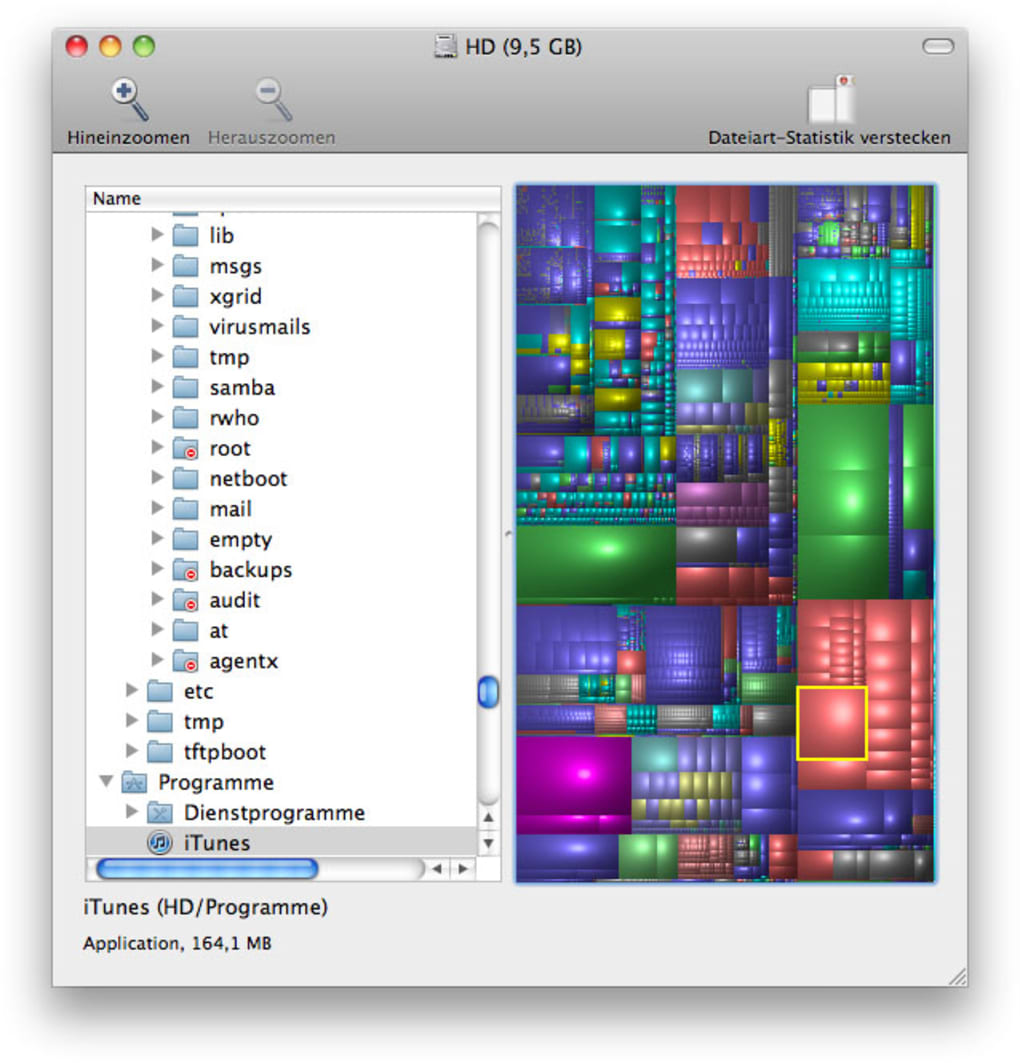
- #Disk inventory x mac app store install
- #Disk inventory x mac app store update
- #Disk inventory x mac app store software
- #Disk inventory x mac app store download
If you don’t want to shell out the $15 for DaisyDisk and you’re not using macOS Sierra, Disk Inventory X is free, but you’ll have to go back and manually locate the large files Disk Inventory X finds in Finder to remove them. For example, as you can see in the GIF above, I can follow a trail of storage hogs all the way down to my email application’s hidden attachments folder. Depending on how you tend to store files or if you have different backups, this might be a few downloads you forgot about, or it might be entire directories of files you no longer need. Go through your very large files and delete anything you no longer need. Even still, before you do this, make sure you have backups of any important files. Since you can preview files in the app, it’s pretty hard to remove an important file by accident. DaisyDisk is idiot-proof and automatically hides system files. This way, you can track down anything that’s suspiciously large, like some random video you needed one time, then delete it. Launch DaisyDisk and it shows you a graph with all your files based on type. DaisyDisk analyses your system, finds massive files, then lets you delete those files right from the app. If you’re not on Sierra, I like the $14.99 hard drive analyser, DaisyDisk. If you’re running macOS Sierra, you can easily find and remove large files using the built-in storage manager. Next up, it’s time to dig around for weird old files you no longer need. If you’re working with small storage, you need to be more vigilant. That isn’t the end of the process though. Clear Out Your Storage SpaceĬhances are, once you clear out a bunch of dumb old apps you no longer use, you’ll have a lot more storage space. Click and drag an application you want to delete into the App Cleaner window, then App Cleaner hunts down and removes any files associated with that application. I like App Cleaner for this because it’s free and easy to use. Instead, it’s best to use a utility that will also track down that orphaned files. These orphan files are rarely substantial in size, but it’s clutter nonetheless.

We’re all trained to uninstall Mac apps by dragging an icon into the trash from the Applications folder, but doing so tends to leave random files associated with that app across your system.
#Disk inventory x mac app store software
If you purchased software from a developer, make sure you still have the licence key somewhere before you delete it, just in case you need it again at some point in the future.
#Disk inventory x mac app store download
Remember, you can always download anything you got from the Mac App Store again. If you have a huge application installed that you never use, like iMovie or Garageband, get rid of them. Open up your Applications folder, then sort the apps by size, with the largest at the top. It’s very easy to glance at a list and know whether you still use an app or not. Personally, I like to start by removing apps and then move on to deleting files. If you’re low on space or folders just feel too cluttered, it’s time to delete old junk. Generally speaking, cleaning up your Mac is often about deleting all the cruft you’ve accumulated over the years that causes your storage space to fill up.

This is completely optional and up to you, but make sure you are at least running the most recent version of whichever operating system you’ve landed on.
#Disk inventory x mac app store update
Of course, Apple’s operating systems have been free for the last several iterations, so if you want to also update to Mavericks, Yosemite, El Capitan or Sierra, you can usually do so without any knock on your Mac’s performance. This might include security updates or small performance improvements for whatever version of macOS you’re running.

#Disk inventory x mac app store install
Install any software updates you see here, including macOS updates. Click the Apple icon > App Store, then click the Updates tab. Illustration: Elena Scotti/GMG, photo: Shutterstock Update Your System Softwareīefore we do anything, let’s make sure your Mac is up to date. Any time you stream a video it seems to lock up for a few seconds. You have to delete something just to download that file attachment from Carla in accounting. Your Mac is running a little slow these days.


 0 kommentar(er)
0 kommentar(er)
